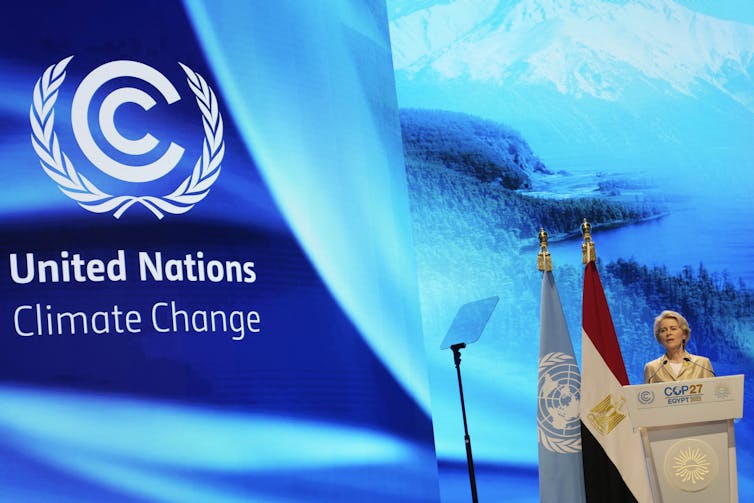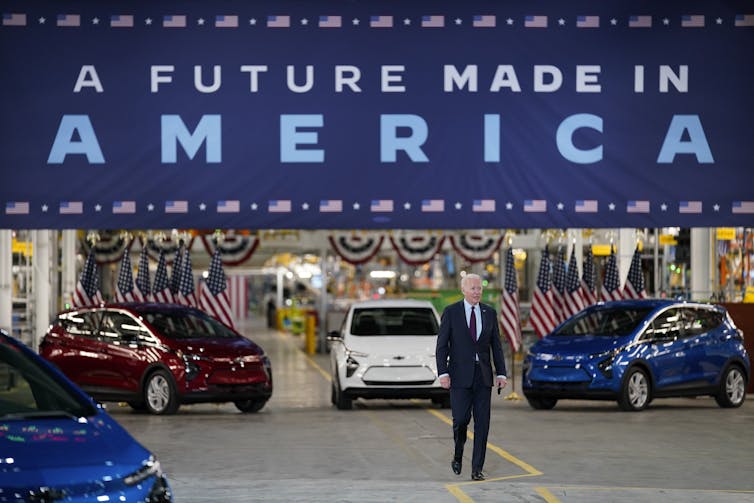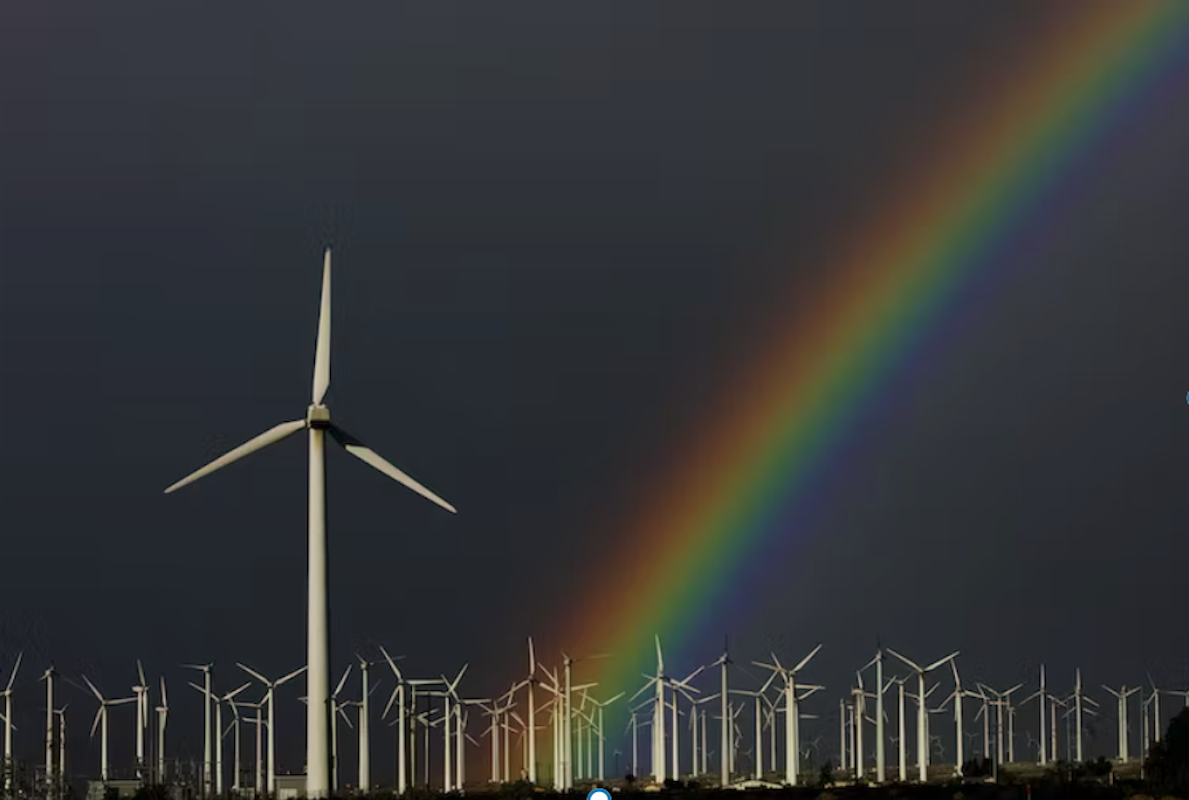This year’s global climate negotiations at the COP27 in Egypt were disappointing. In particular, the international commitment to limit planetary warming to 1.5℃ remains on “life support”.
But hope is not lost. In fact, 2022 was an historic year for international climate policy. It marked a shift in how the world’s biggest greenhouse gas emitters – China, the United States, the European Union and India – deal with climate change when faced with economic and energy shocks.
In the past, climate action has been pushed to the back-burner when governments devise policy responses to global crises. But this year, amid Russia’s war on Ukraine, spiralling inflation and energy shortages, tackling climate change has been central to recovery plans.
It signals climate action and economic stability are no longer seen as competing priorities – instead, national governments realise they go hand-in-hand. As European Commission President Ursula von der Leyen has noted, this represents a major turning point in global climate policy and a “leap into the future”.

A global turning point
Russia’s illegal war on Ukraine has destabilised the global energy market and caused sharp rises in food and commodity prices, worsening global inflation.
In the past, such shocks would have prompted governments to enact a fairly blinkered policy response.
During the 1970s global oil crisis, for example, governments brought in massive fossil fuel subsidies and eased environmental rules for the petroleum industry, rather than reduce oil dependency.
In the aftermath of the global financial crisis in 2008, government responses were often similarly short-sighted. Low-interest loans to banks and other institutions, for example, perpetuated a business-as-usual economic system of high emissions.
This was coupled with years of austerity which derailed funding and investment for climate action.
Hearteningly, 2022 has seen a very different approach.
The United States, European Union, China and India have all prioritised climate change in their response to global economic crises, as I outline below.
Why? Public support for climate action is ever-growing and climate-related disasters are becoming worse. What’s more, renewable energy costs continue to fall, and energy security and global competitiveness remain big concerns.
The EU and US step up
In the immediate aftermath of Russia’s invasion of Ukraine, the EU made a “dash for gas” to replace Russian supply. Germany made deals to purchase gas from African countries, Australia, the US and Middle East, triggering fears climate action would be delayed.
But the EU has since made climate change action a central priority. Its RePowerEU plan, released in May, presents clean energy as the solution to the so-called energy trilemma of costs, security and environmental sustainability.

Among other measures, the plan involves:
- ramped-up targets for renewable energy and energy efficiency
- substantial home and business electrification measures including electric vehicles and heat pumps
- ambitious targets for green hydrogen.
The plan intends to eliminate reliance on Russian gas by 2027 and almost halve overall gas use by 2030.
The US took similar action this year. Its historic Inflation Reduction Act puts clean energy investment at the forefront of plans to address the cost-of-living crisis.
At least US$369 billion will be spent on clean energy initiatives to reduce energy bills. Clean energy will be embedded in measures across the economy through tax incentives, subsidies and grants. The investment prompted one observer to predict “the climate economy is about to explode”.
By aligning climate change with economic policy, the government has shifted the business narrative from risk to opportunity.
This month the Biden administration went further, with a proposal for major government suppliers to disclose greenhouse gas emissions and set science-based emissions reduction targets. Climate change is also being considered in US pension plans and company reporting requirements.
By embedding climate change in existing systems, trillions of dollars will shift into clean energy. This is likely to change the US economy forever and accelerate emissions reduction.

Progress in China and India
So what about the developing economies of China and India?
In China, coal use increased in the short-term over winter this year. However, China’s government has released plans for specific sectors coupling economic and energy security, and low-carbon growth.
In July, the government released an emissions reduction blueprint for urbanisation and rural development. It includes ambitious measures to increase the energy efficiency of buildings, electrify buildings and transport (including huge deployment of electric vehicle charging stations) and mandate rooftop solar on new factories and public buildings.
The government has also worked closely with provincial governments on targets to more than double the installed capacity of wind and solar by 2025.
In India, a National Electricity Plan released by the central government this year has clean energy at its core. It means renewables capacity is set to soar by 250% over the next decade.
India’s government has also introduced policies to favour electrification in buildings and transport – a departure from a previous policy in which gas played a significant role in future energy supply.

Change is afoot
Analysis suggests the systemic changes outlined above could mean the EU, China and India exceed their current commitments under the Paris Agreement.
This is good news – but the world still has a long way to go. Climate action must be embedded deeply in the government policies of all nations, as well as in existing economic and energy systems. This is no small task – but it’s necessary to achieve the transformation required to address the climate crisis.
Of course, 2022 was also a big year for climate action in Australia. The Albanese Labor government was elected in May, and has set about implementing a climate action agenda far stronger than that of the previous Coalition government.
Australia still lags behind other comparable nations. But recent developments in the EU and US offer lessons on the way forward.
Katherine Lake, Research Associate at the Centre for Resources, Energy and Environmental Law, The University of Melbourne
This article is republished from The Conversation under a Creative Commons license. Read the original article.

